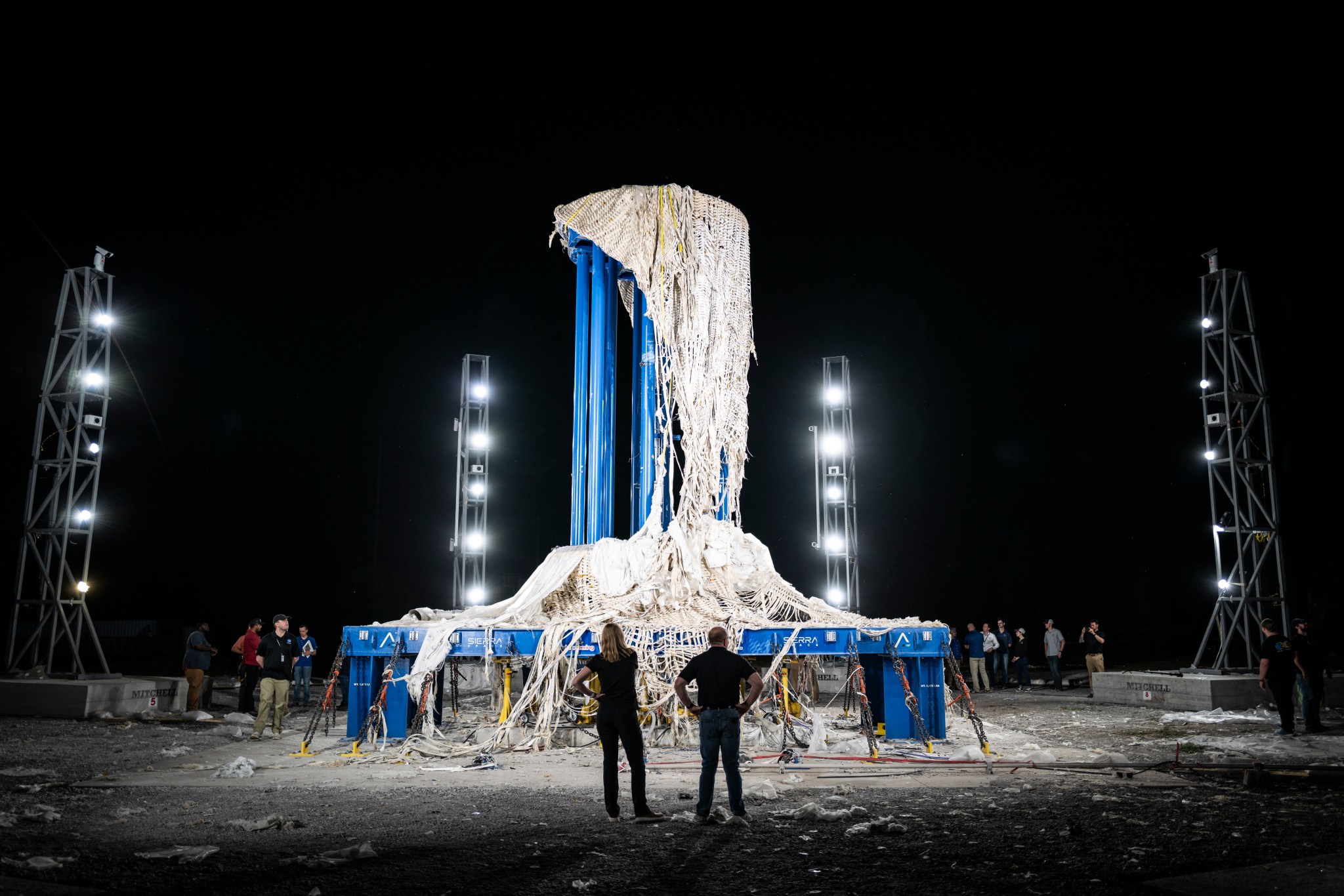Sierra Space’s LIFE Habitat after a full-scale final burst pressure test at NASA’s Marshall Space Flight Center in Huntsville, Alabama
Sierra Space
An element of a NASA-funded commercial space station, Orbital Reef, under development by Blue Origin and Sierra Space, recently completed a full-scale final blast pressure test as part of the agency’s efforts for new destinations in orbit low of the Earth.
This milestone is part of a NASA Space Act Agreement awarded to Blue Origin in 2021. Orbital Reef incorporates elements provided by Sierra Space, including the LIFE (Large Integrated Flexible Environment) habitat structure.

A close-up of Sierra Space’s LIFE habitat, which is made of high-strength webbing and fabric, after being pressured to failure during an explosive test.
Sierra Space
Teams conducted the blast test in Sierra Space’s LIFE habitat structure using test capabilities at NASA’s Marshall Space Flight Center in Huntsville, Alabama. The inflatable habitat is made of high strength webbing and fabric that forms a strong structure once it is under pressure. The multiple layers of soft cargo materials that make up the shell fit compactly into a payload panel and inflate when ready for use, enabling the habitat to be launched in a single rocket.
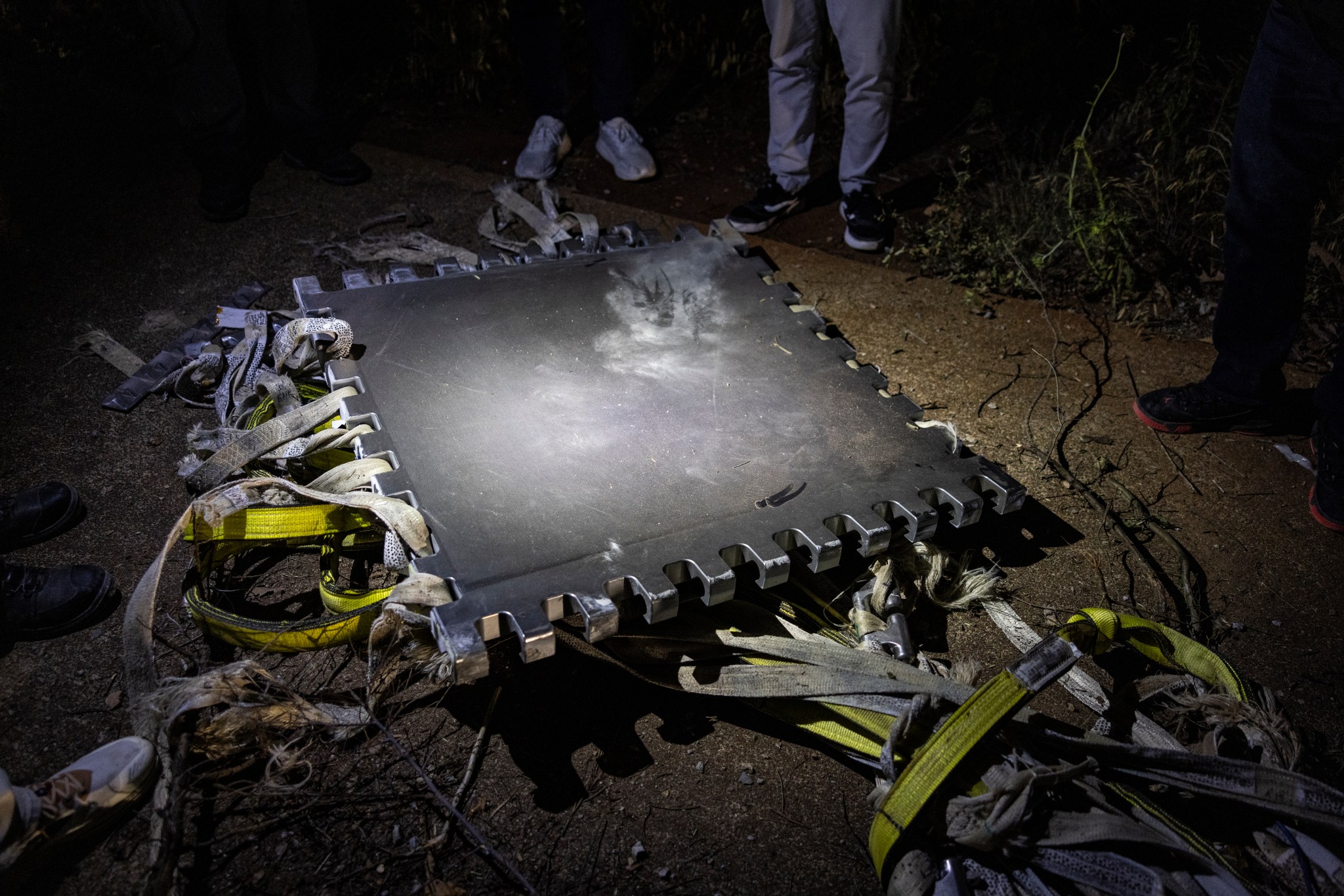
A close-up of a blank plate detached from Sierra Space’s LIFE habitat structure after its final full-scale blast pressure test at NASA’s Marshall Space Flight Center in Huntsville, Alabama. The plate is used to test the concept of a habitat window.
Sierra Space
“This is an exciting test by Sierra Space for Reef Orbital, demonstrating the industry’s commitment and ability to develop innovative technologies and solutions for future commercial destinations,” said Angela Hart, manager of the Commercial Low Earth Orbital Development Program. of NASA at the agency’s Johnson Space Center in Houston. “Each successful development milestone by our partners is one more step toward achieving our goal of enabling commercial destinations in low Earth orbit and expanding the low Earth orbit market.”
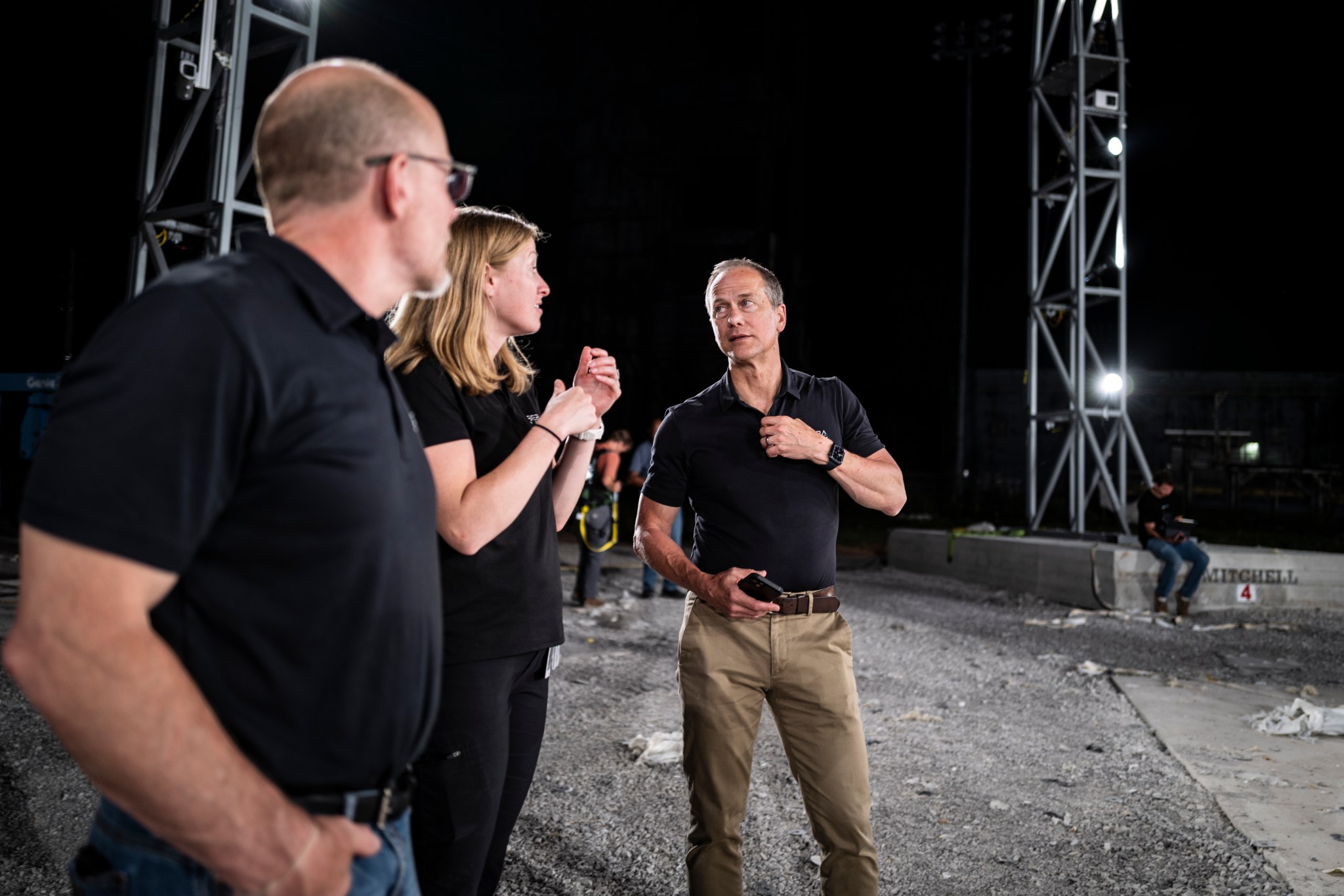
Dr. Tom Marshburn, Sierra Space’s chief medical officer, speaks with members of the Sierra Space team after the blast test.
Sierra Space
The pressure to failure during the test demonstrated the habitat’s capabilities and provided the companies with critical data supporting NASA’s soft inflatable cargo certification guidelines, which recommend a progression of tests to evaluate these materials in relevant operational environments and to understand failure modes.
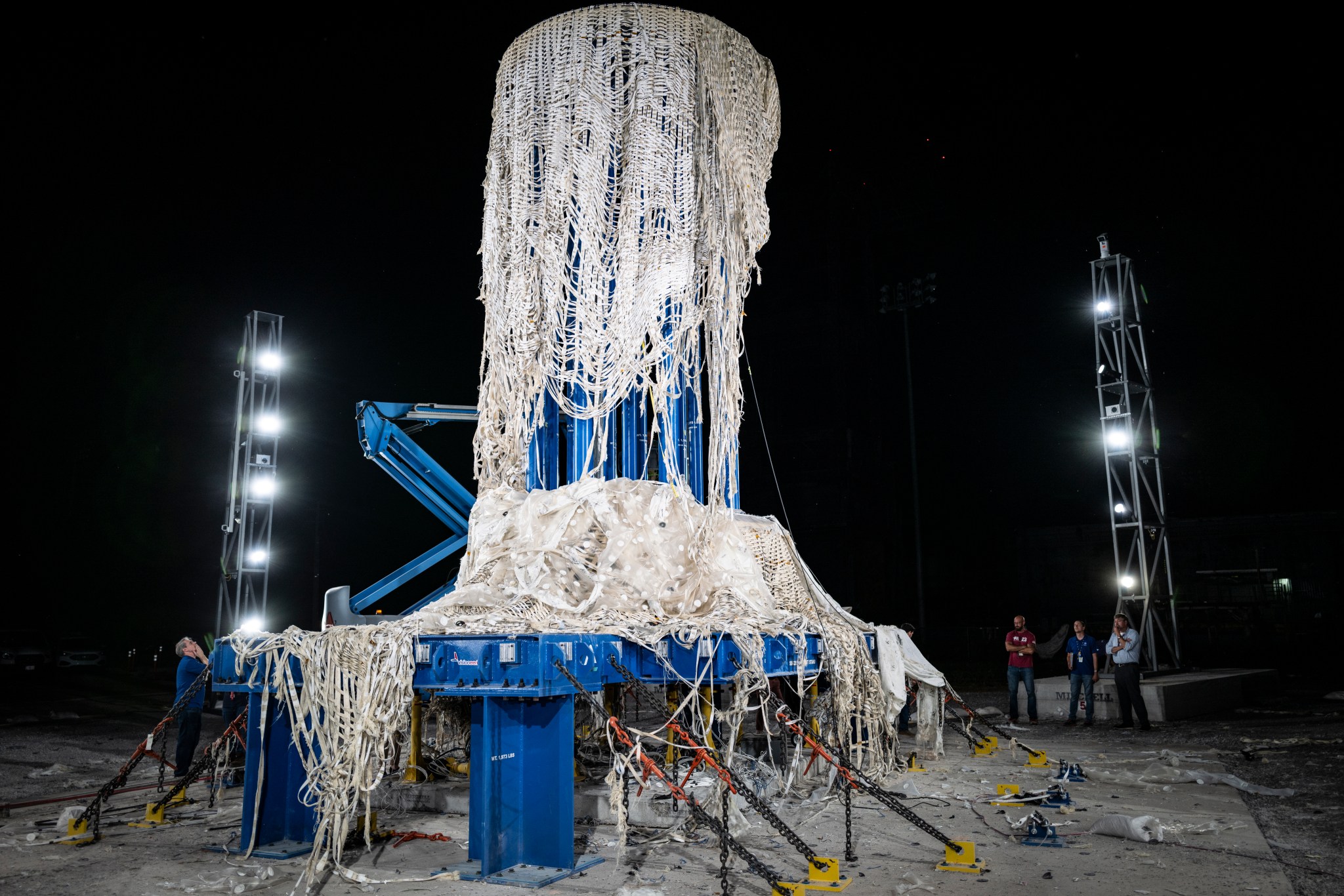
Sierra Space’s LIFE Habitat after a full-scale final blast pressure test at NASA’s Marshall Space Flight Center in Huntsville, Alabama.
Sierra Space
Demonstrating the ability of the habitat to meet the recommended safety factor through full-scale ultimate burst pressure testing is one of the key structural requirements for a soft cargo item such as Sierra Space’s LIFE habitat seeking flight certification. .
Prior to this latest test, Sierra Space conducted its first full-scale final burst pressure test in the LIFE habitat at Marshall in December 2023. Additionally, Sierra Space previously completed subscale tests, first at the Johnson Space Center of NASA in Houston and then at Marshall as part of the ongoing development and testing of inflatable housing architecture.
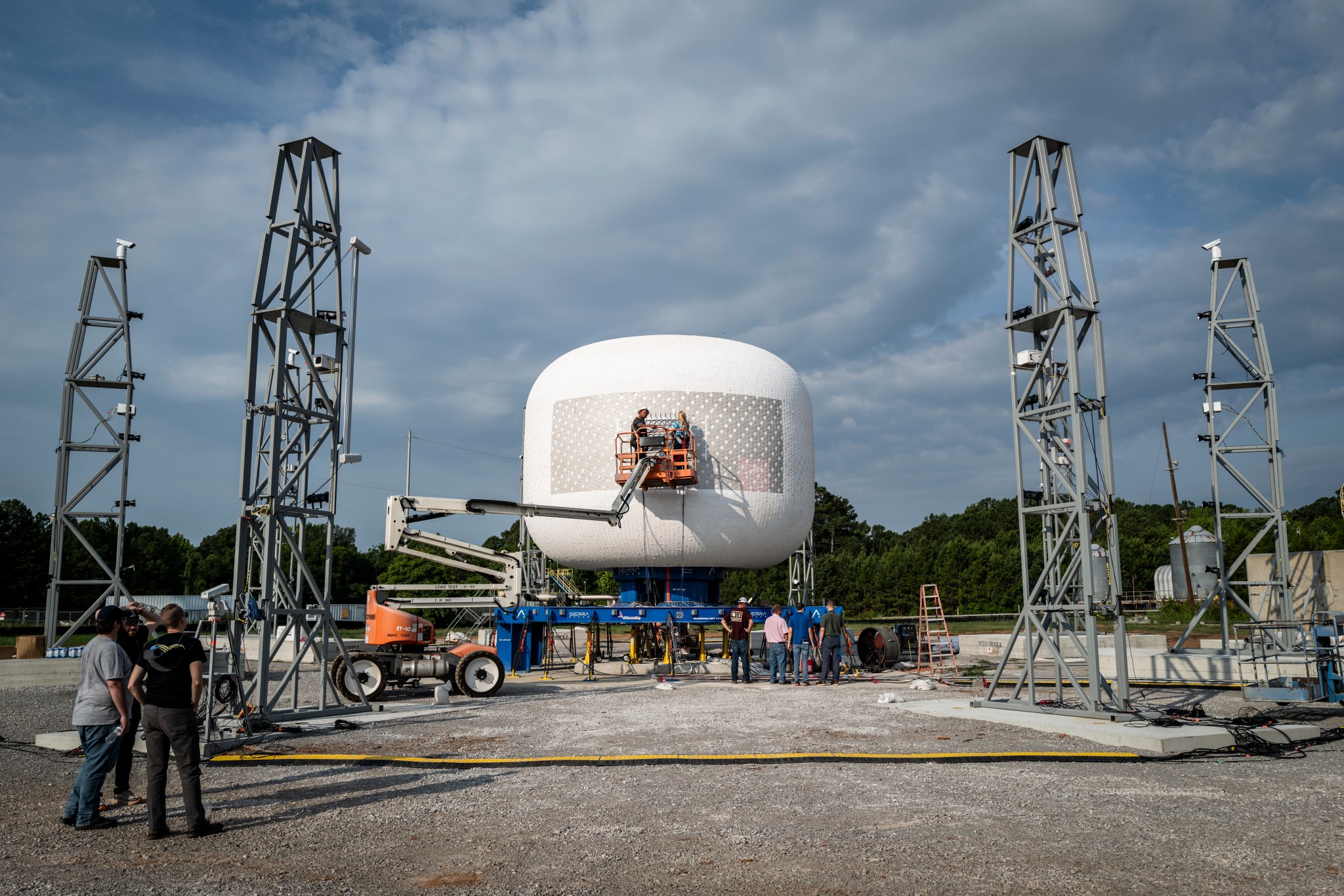
Sierra Space’s LIFE Habitat on the test stand at NASA’s Marshall Space Flight Center before an explosive test. The LIFE habitat will be part of Blue Origin’s commercial destination, Orbital Reef.
Sierra Space
NASA supports the design and development of numerous commercial space stations, including Orbital Reef, through funded and unfunded agreements. The actual design and development phase will be followed by the procurement of services from one or more companies.
NASA’s goal is to achieve a robust economy in low Earth orbit, where the agency can purchase services as one of many customers to meet its science and research objectives in microgravity. NASA’s commercial strategy for low Earth orbit will provide the government with reliable and secure services at a lower cost, enabling the agency to focus on the Artemis missions to the Moon in preparation for Mars, while also continue to use low Earth orbit as a training and proving ground. for those deep space missions.
/Public Notice. This material from the original organization/author(s) may be current in nature and edited for clarity, style and length. Mirage.News does not take institutional positions or sides and all views, opinions and conclusions expressed herein are solely those of the author(s). Watch it in full here.
